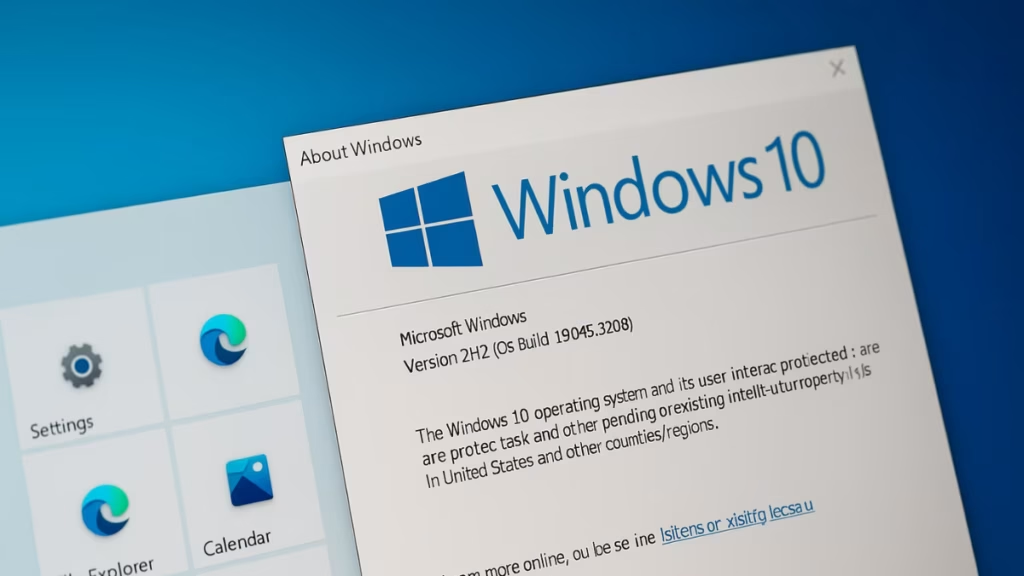Windows 10, the operating system that defined a generation of PCs, is reaching the end of its official support life on October 14, 2025. After a decade of updates, security patches, and refinements, Microsoft will retire the platform—meaning no more regular updates or technical support for most users. But that doesn’t mean your PC will suddenly stop working.

Microsoft launched Windows 10 in July 2015 as the “last version of Windows,” promising continuous updates rather than major new releases. However, the arrival of Windows 11 in 2021 shifted that vision. Now, Windows 10 version 22H2 stands as its final release, with full support officially ending in October 2025.
Once support ends, Microsoft will stop delivering:
- Monthly security patches
- Bug fixes and reliability updates
- Feature enhancements or customer support
That change affects every edition—Home, Pro, Enterprise, and Education. For hundreds of millions of devices still running Windows 10, it marks a major turning point.
What “End of Support” Really Means
End of support, or EOL (End of Life), doesn’t render your PC unusable. Windows 10 will continue to function as-is. But it becomes increasingly vulnerable to cyber-threats as new security exploits emerge.
In other words, your system won’t suddenly shut down, but it will stop evolving—and without security patches, the risk of malware, ransomware, or data breaches grows over time.
Extended Security Updates (ESU): Microsoft’s Safety Net
To ease the transition, Microsoft created the Extended Security Updates (ESU) program, which extends essential security coverage for up to three additional years, through October 2028, depending on your plan.
For home and small-business users, the ESU program offers three enrollment options:
- Free via Microsoft Rewards — redeem 1,000 points earned by using Bing or other Microsoft services.
- Free via OneDrive Backup — enable Windows Backup and sync your PC settings to your Microsoft account. (Note: only 5 GB of storage is free.)
- Paid subscription — purchase ESU coverage for $30 per year.
Enrollment requires Windows 10 version 22H2 and a Microsoft account. European users (EEA region) automatically receive one year of free updates without additional steps.
Important: If you delay enrollment until after October 14, 2025, your device will be temporarily unprotected until you join the ESU program.
Should You Upgrade or Stay on Windows 10?
The right choice depends on your hardware, workflow, and risk tolerance.
1. Upgrade to Windows 11
If your PC meets the TPM 2.0 and Secure Boot requirements, upgrading is the most secure path. Windows 11 brings a redesigned interface, enhanced memory protection, and native AI features such as Copilot integration.
2. Keep Windows 10 (with ESU)
If your PC isn’t compatible or you’re not ready to upgrade, ESU gives you breathing room. You’ll still receive critical patches but no new features. Think of it as a temporary bridge, not a permanent solution.
3. Explore Alternatives
For advanced users, Linux distributions like Ubuntu, Zorin OS, or Winux (a Windows-like Linux distro) offer secure, lightweight environments that mimic the Windows experience.
Google’s ChromeOS Flex is another option for older hardware that can’t handle modern Windows builds.
Business and Education Users: Multi-Year Extensions
Organizations can purchase up to three years of ESU coverage:
- Year 1 → $61 per device
- Year 2 → $122 per device
- Year 3 → $244 per device
Educational institutions enjoy heavily discounted rates (as low as $1 per device in the first year).
Final Update: October 14, 2025
Because that date falls on a Patch Tuesday (the second Tuesday of the month), Microsoft will release one last cumulative update for all Windows 10 editions. After that, regular Windows Update deliveries end unless you’ve joined ESU.
Back Up Before You Transition
Before making any OS change—or even joining ESU—back up your files.
Microsoft recommends using:
- Windows Backup
- OneDrive Sync
- External Drives or NAS devices
A clean backup ensures you can recover your data if something goes wrong during an upgrade or migration.
See also: How to Upgrade from Windows 7 to Windows 10 and Windows 11
Windows 10 will be remembered as the OS that unified the Windows ecosystem—spanning desktops, tablets, and hybrid devices—with over one billion installations worldwide. But with new hardware standards and AI-driven workloads shaping computing’s future, Microsoft’s push toward Windows 11 (and eventually 12) is inevitable.
Whether you choose to upgrade, extend, or migrate away, planning ahead ensures your device stays secure, compliant, and ready for what’s next.
If you’re still on Windows 10, act before October 14, 2025. Either upgrade to Windows 11, enroll in the free ESU program, or transition to an alternative OS. Waiting until after the deadline could expose your PC to unnecessary risk.

